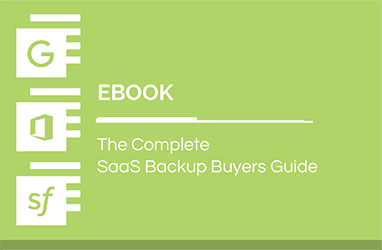Spanning Blog
Feb 16
2024
What Is Multifactor Authentication (MFA)? How It Works, Examples & Benefits
Multifactor authentication (MFA) requires users to provide multiple types of verification to access digital accounts, systems and apps. Learn how it works.
Sep 22
2023
Data Governance: Definition, Framework Components, Best Practices & Benefits
Data governance is a set of policies and procedures that ensures holistic data management throughout its lifecycle, from creation to disposal.
Mar 21
2023
High Availability: How It Works and Why It’s Important
High availability (HA) ensures that an IT infrastructure operates continuously, even if certain components fail. Learn why it’s important and how to achieve it.
Dec 16
2020
Data Retention Policy: What It Is and How to Create One
A data retention policy guides what data should be stored or archived, where that should happen and for how long. Download a free data retention template to get started.
Jul 07
2020
FERPA Compliance & How to Obtain It
Learn what the Family Educational Rights and Privacy Act (FERPA) is and what measures educational institutions must take to obtain FERPA compliance.
Dec 10
2019
Why Granular SharePoint Backup and Recovery is Important
Selective, granular SharePoint backup and recovery can help organizations to meet security standards, comply with industry regulations, and reduce liabilities. Learn why a blanket backup solution is not always the best option.
May 07
2019
The Year of GDPR
The EU General Data Protection Regulation (GDPR) came into effect on May 25, 2018. With nearly a year under its belt, Spanning takes a look at the major penalties & overall repercussions of GDPR and examines what we can learn from them.
Feb 04
2019
[Infographic] Employees are Cyber Secure in Theory, But Not in Practice
Cybersecurity is a top priority for organizations. All it takes to infect a network or steal valuable data, is one wrong click by an employee. While employees seem to have good knowledge of basic cybersecurity practices, there are considerable security blind spots which leave the employee and organization vulnerable to breaches. Spanning helps to identify red flags and vulnerabilities in security awareness training for employees.
Jan 22
2019
5 Things Every MSP Should Know About HIPAA
There is no official “certification” in HIPAA recognized by the Federal government, therefore MSPs who work with healthcare providers or payers need to educate themselves on HIPAA compliance. Here are the top 5 things MSPs should know about HIPAA.
Dec 06
2018
Business Continuity and Disaster Recovery: Your Organization’s Safety Plan
From hurricanes, errant employees, malware to even a rodent with an appetite for cables — the likelihood of an organization suffering data loss has never been greater. An organization’s best defense is to plan for business continuity and disaster recovery by using processes that guide organizations to possibly prevent and/or better manage an (unpredictable) disruptive event.





